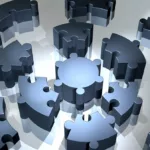The fact that movies will soon be made exclusively on digital is definitely a big bummer for film buffs like myself, but we also have to accept that it’s an inevitability.
It was especially disheartening to learn one of cinema’s greatest masters, Martin Scorsese, will now be working on digital for the rest of his career because it’s just too difficult and expensive to keep working in film.

There have already been reports of theaters facing a cut off point where they will have to convert to digital projectors or the major studios won’t send them new movies.
In a report on this in the L.A. Times, we also learned a big shocker: This could end up killing off what’s left of the drive-ins. What was especially shocking to us was to learn there were even drive-ins left.
The drive-ins thrived throughout the 50’s, 60’s and 70’s, but by the 80’s they were mostly sold off for the land. According to the L.A. Times, there are 368 of them left, when back in the fifties there were 4,000 of them all over the country. Indeed, there were reportedly more drive-ins back in the day than indoor theaters.

The deadline for film prints is later this year, and converting your theater or drive-in will cost $70,000. For the few drive-ins that are left, they won’t be able to afford the switch, and that could end off killing them off for good.
As one drive-in owner told the Times, when the drive-ins vanished in Southern California, “It was like a culture that began to disappear. A piece that is missing in the heart of California.”
Yet it won’t just be what’s left of the drive-ins. Again, we didn’t know they were still around frankly, but a lot of smaller theaters will go out of business as well.
As Indie Wire reported last year, “We’re about to lose 1,000 small theaters that can’t convert to digital…Hollywood appears ready to write off huge swaths of the ticket-buying public. They have crunched the numbers and believe they can live with a lot fewer theaters in this world.”
Again, losing film is inevitable, we’re just about there, and we have to accept it, whether we like it or not. We guess it’s the price of progress, and there’s definitely big pluses with digital, especially considering a young director can afford to make a movie cheaper than ever with the technology. If you love movies like we do, some of your fondest memories are from being in theaters, and we’ll still have those for a while, but we’ll certainly miss the texture, warmth, and look of film, even with digital clearly being the future.





